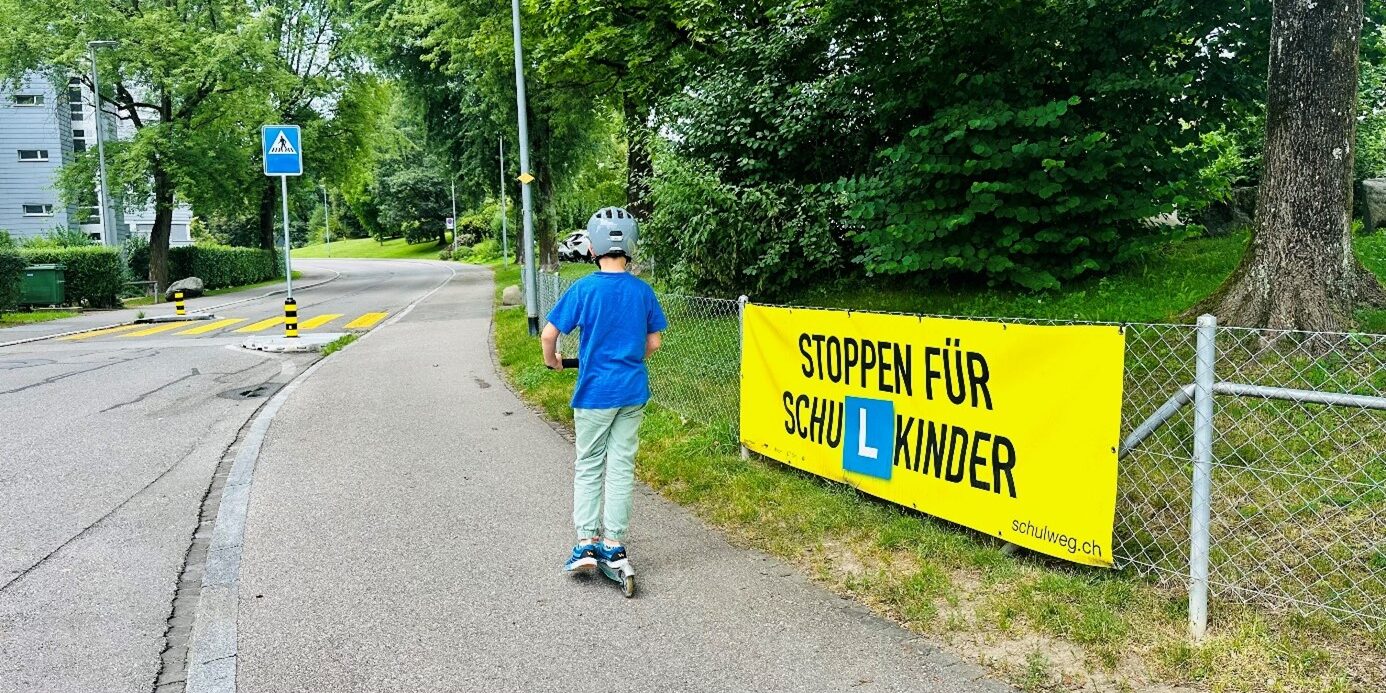Starting school – Children in road traffic
Sven Meier, President of the Zug Traffic School, provides information on traffic rules and situations. Do you have any questions or uncertainties? Don’t hesitate to contact him and you will receive competent information.
From 19 August, thousands of children and young adults will once again be on the roads in Zug on their way to kindergarten or school. Walking to school is a special experience for children. It promotes children’s independence and exercise is an important contribution to their general development. But children behave differently on the road than adults do. They are unpredictable and lack awareness of the dangers around them.
Children are learners, even in road traffic
Children imitate what they see in their parents and other road users. It is therefore important that their role models adhere to the rules. In addition, children are still unfamiliar with the dangers and are not yet able to judge speeds and distances correctly. They have no idea how long the stopping distance of a vehicle is. Children are still developing the necessary skills needed to be safe when walking on the streets.
Some examples:
- Due to the small size of children, it is difficult for them to get a full overview of the traffic ahead and they are easily overlooked by drivers.
- Children only gain the ability to reliably determine the direction from which certain sounds are coming from, in traffic specifically, from the age of 8 to 9.
- Our ‘awareness of danger’ is not fully developed until the age of 8 to 10.
- Children find it extremely difficult to judge distances and speeds. At the age of 5, they can’t even tell the difference between a stationary and a moving vehicle.
Always bring your vehicle to a standstill – do not use special signs or gestures!
73% of serious accidents involving children on foot occur when crossing the road, 46% of them at pedestrian crossings. Always come to a complete stop at pedestrian crossings and be patient. Children learn, in traffic lessons, that they should only cross the road when the vehicle has come to a complete stop. Do not give hand signals or use the headlight flasher – these signals are well-intentioned, but could lead to children running off carelessly and not paying attention to other dangers such as oncoming traffic.
Help us
In order to prevent accidents involving children, it is therefore primarily up to the adults to act as good role models and teach the little ones how to behave correctly in traffic. Furthermore, road users in the vicinity of school buildings should adjust their speed and bear in mind that the attention span of children, especially in groups, can be very limited. Special care should also be taken with children on bicycles, scooters, skateboards, etc., as sometimes the little ones are not yet fully in control of their vehicles.



